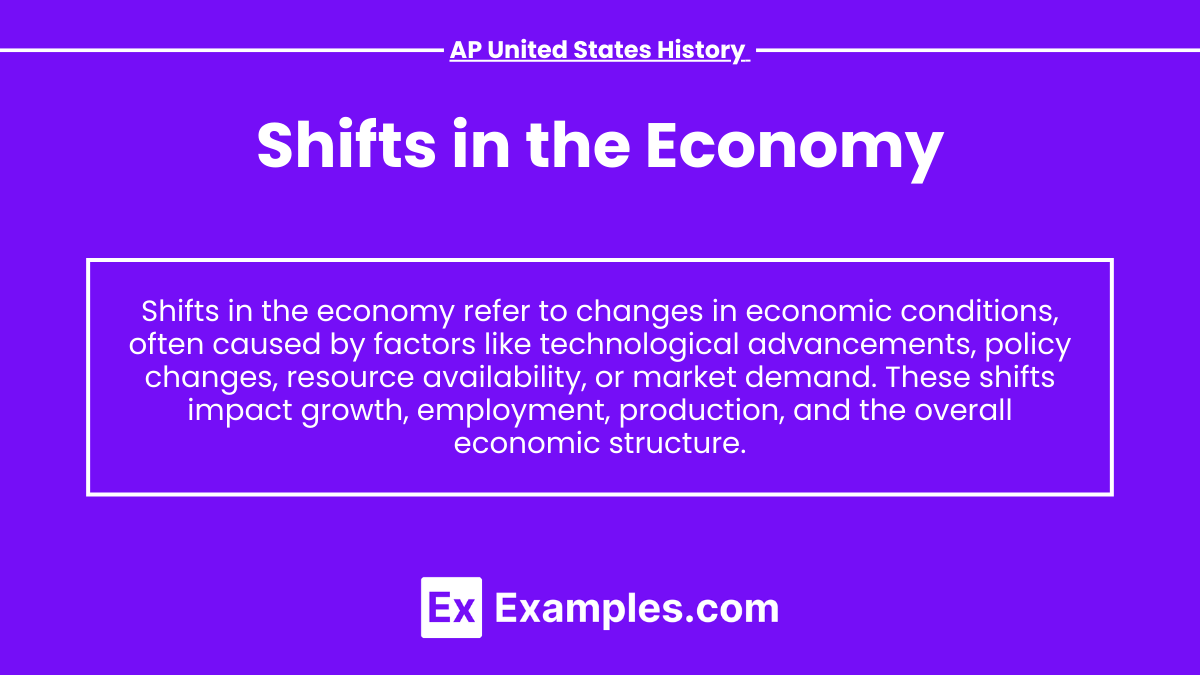Shifts in the economy refer to significant changes in economic conditions, often driven by factors like technological advancements, policy changes, globalization, or shifts in consumer behavior. These transitions can impact industries, employment trends, and economic growth, leading to periods of expansion or contraction. Understanding these shifts is crucial for businesses and governments to adapt and remain competitive.
Learning Objectives
Learning objectives for Shifts in the Economy in AP U.S. History include understanding how economic transitions influenced social, political, and cultural changes, analyzing key factors driving these shifts, and assessing their impact on different populations throughout American history.
1. Early Agricultural Economy (1600s-1800s)
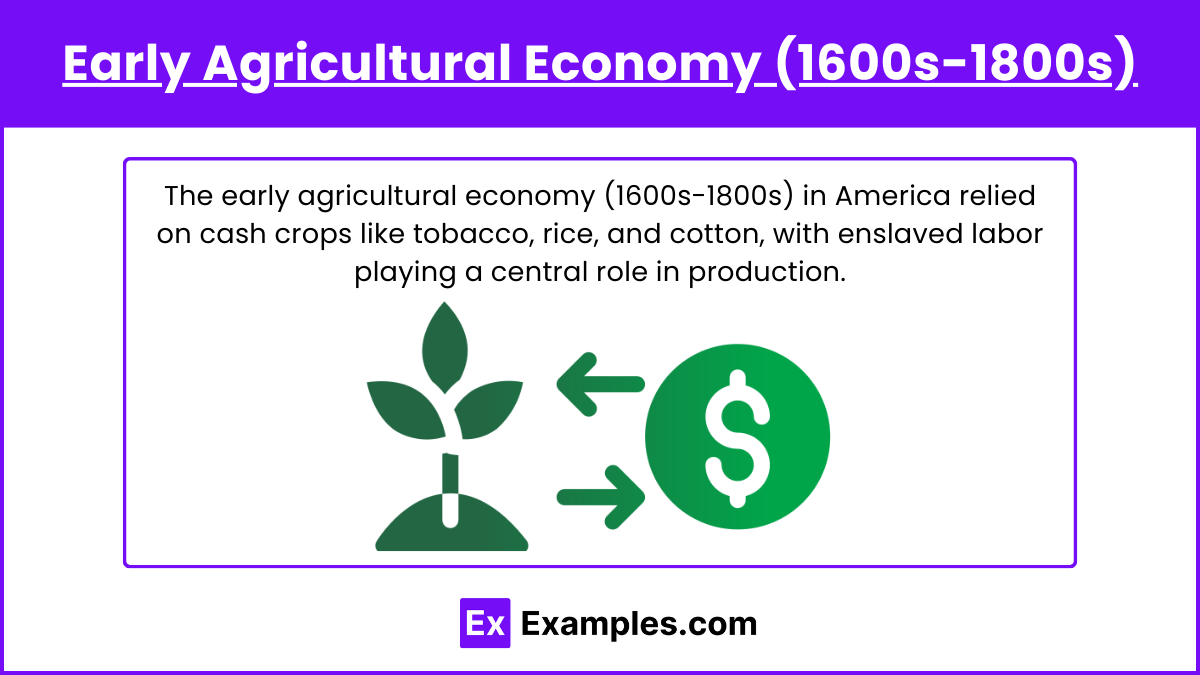
- Colonies depended on agriculture, particularly cash crops like tobacco and cotton.
- The Southern economy relied heavily on slave labor, while the North moved toward trade and manufacturing.
- Economic divisions between North and South later fueled sectional tensions and the Civil War.
2. The Market Revolution (1815-1840s)
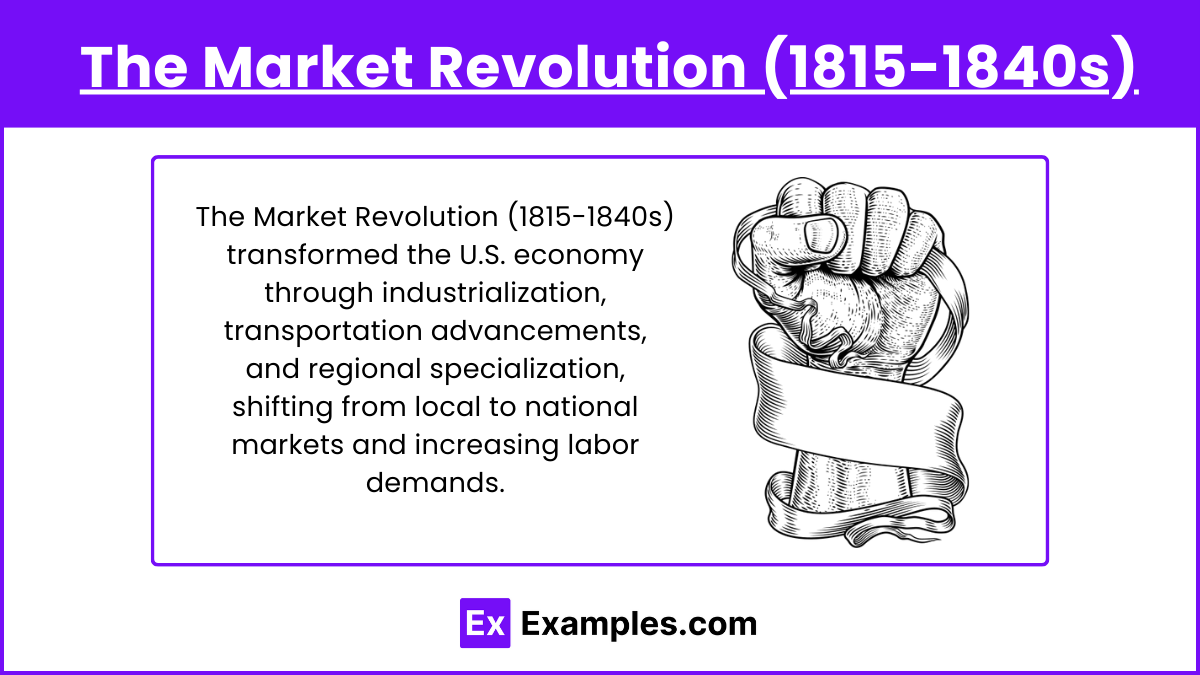
- Marked by technological advancements such as the steamboat, cotton gin, and railroads.
- Shifted the U.S. economy from small-scale local production to larger, interconnected markets.
- Created a new industrial labor class, sparking urbanization and transforming gender roles.
- Rise of internal improvements and transportation networks supported economic growth.
3. Industrialization and the Gilded Age (1865-1900)
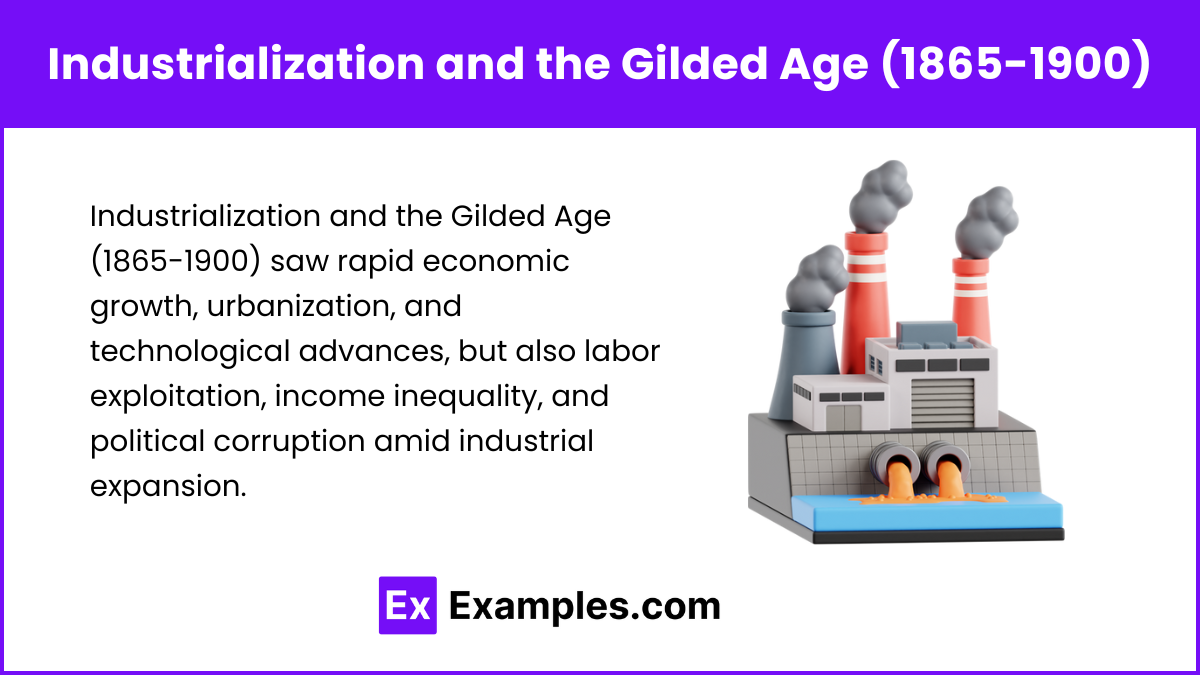
- Post-Civil War industrialization led to rapid economic growth, concentrated in urban areas.
- Key industries: railroads, steel, oil, and textiles.
- Rise of big businesses and monopolies under leaders like Andrew Carnegie (steel) and John D. Rockefeller (oil).
- Widening gap between wealthy industrialists and the working class led to labor strikes and the rise of unions.
- Significant economic disparity led to calls for reform, eventually resulting in Progressive Era policies.
4. The Great Depression and the New Deal (1929-1941)
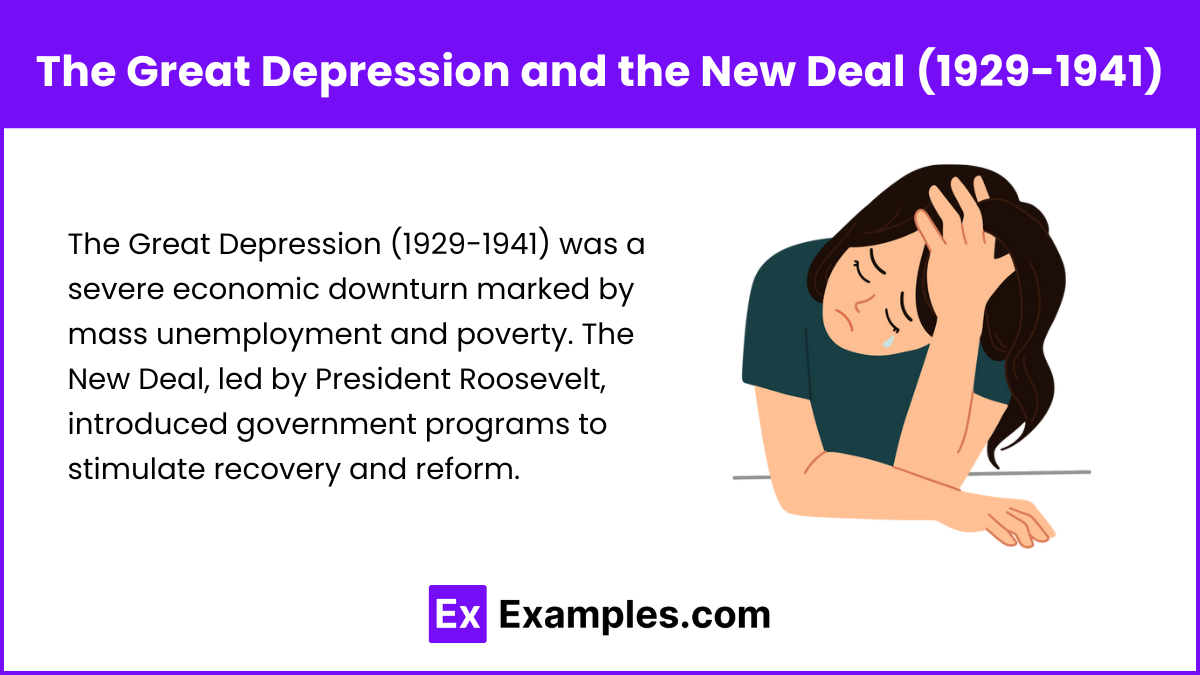
- The stock market crash of 1929 triggered the Great Depression, leading to widespread unemployment and economic hardship.
- President Franklin D. Roosevelt’s New Deal programs aimed to stabilize the economy through government intervention, creating jobs, providing social welfare, and reforming the banking system.
- The New Deal expanded the federal government’s role in the economy, laying the foundation for future economic regulation.
5. Post-WWII Economic Boom (1945-1970s)
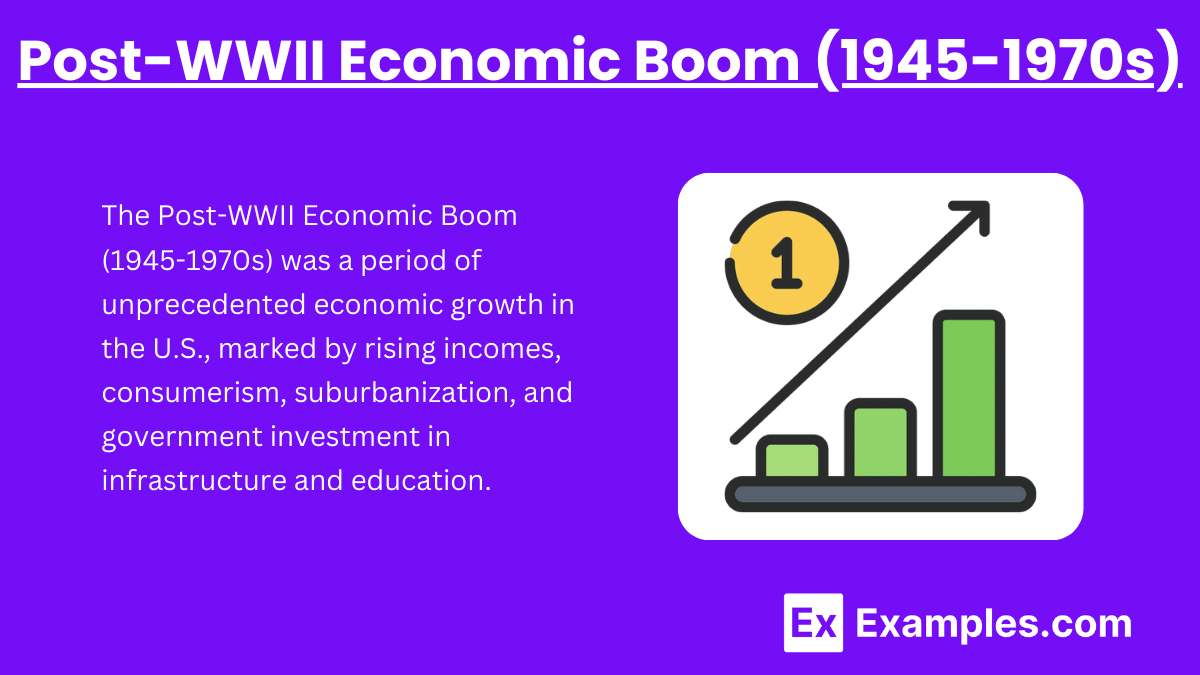
- The U.S. emerged from WWII as a global economic superpower.
- The economy expanded rapidly due to wartime industrialization, consumer demand, and government programs like the GI Bill, which funded education and home loans for veterans.
- Suburbanization, the rise of consumer culture, and mass production of goods (automobiles, household appliances) defined the era.
- Challenges emerged in the 1970s with rising inflation, unemployment, and an oil crisis, leading to economic stagnation.
6. Reaganomics and Economic Conservatism (1980s)
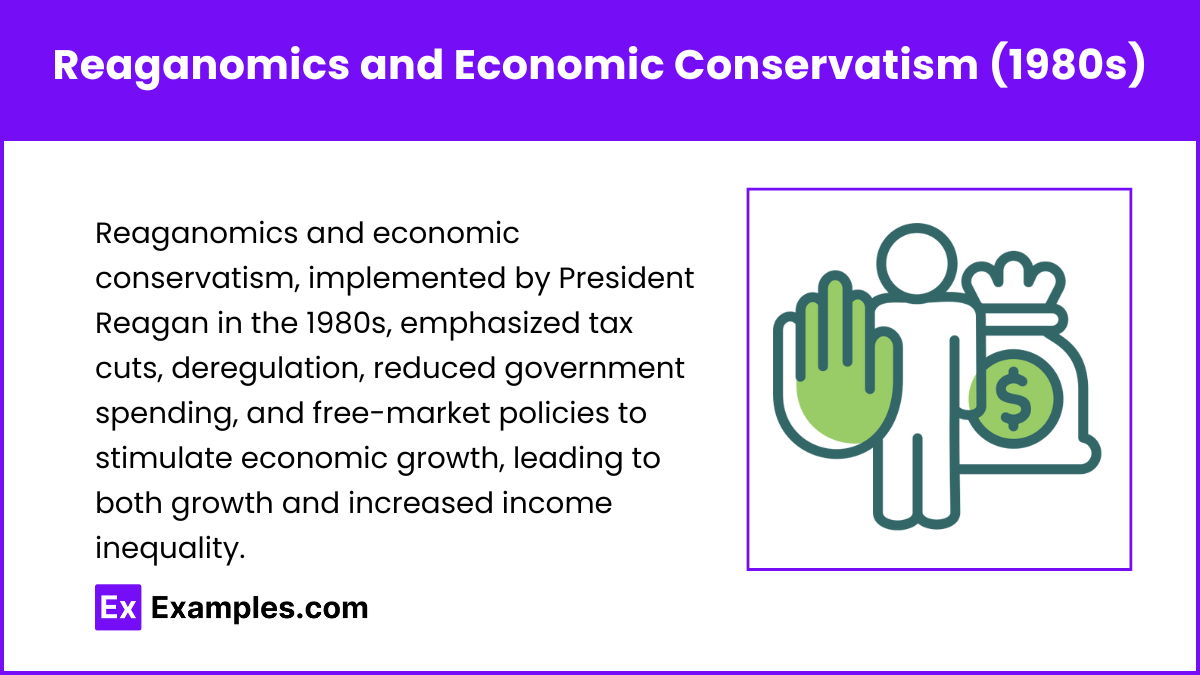
- The 1980s saw a shift towards conservative economic policies under President Ronald Reagan.
- “Reaganomics” focused on reducing taxes, deregulation, and limiting government spending to stimulate growth.
- Proponents argued it led to economic growth, while critics noted it increased wealth inequality and national debt.
- The 1980s marked a significant shift towards free-market capitalism and away from the government-led policies of the New Deal era.
7. Globalization and the Technology Boom (1990s-Present)
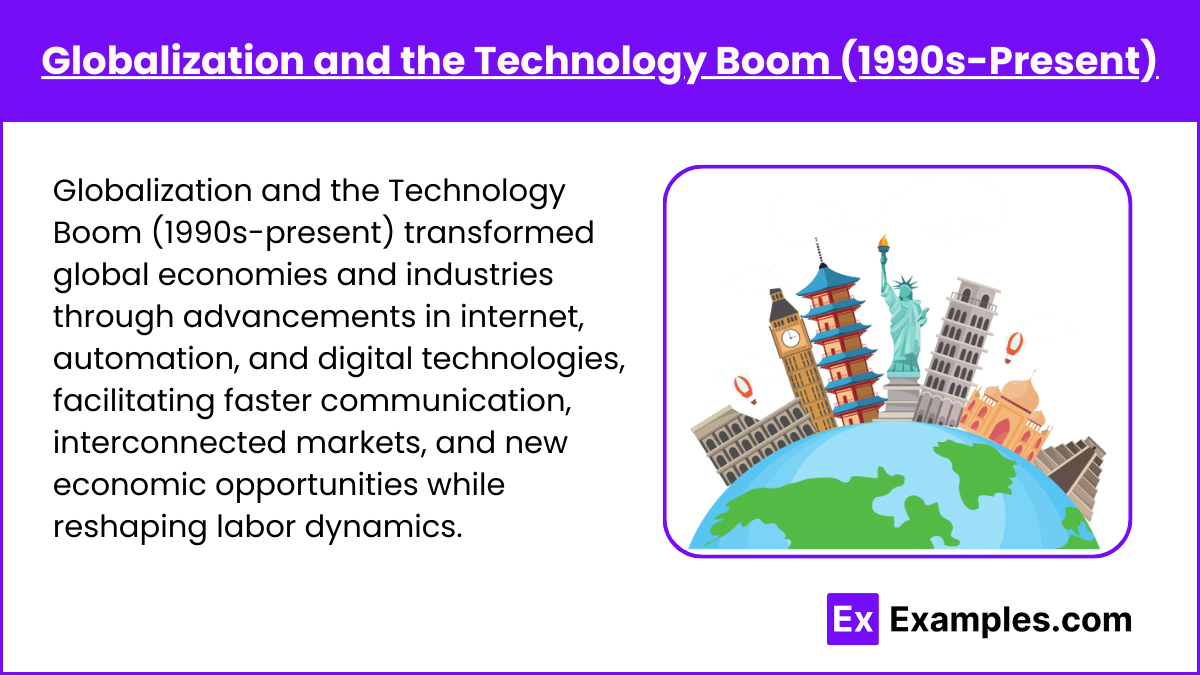
- The late 20th and early 21st centuries saw increased globalization, marked by free trade agreements like NAFTA and technological advancements, especially in computing and the internet.
- The economy became more interconnected globally, with the rise of multinational corporations and outsourcing of labor.
- The technology boom in the 1990s fueled economic growth, leading to the dot-com bubble, which burst in the early 2000s.
- Post-2008, the economy recovered through financial reforms, stimulus packages, and the growth of tech-based industries.
Examples
- The Market Revolution (1815-1840s) and its impact on American society and economy.
- The Gilded Age (1865-1900), marked by industrialization and the rise of big business.
- The Great Depression (1929) and the New Deal (1933-1939), reshaping government involvement in the economy.
- Reaganomics (1980s) and the shift towards conservative economic policies.
- Post-WWII Economic Boom (1945-1970s) and the rise of suburbanization and consumer culture.
MCQs
1. Which of the following best describes the impact of the Market Revolution on the American economy?
- A) It decreased the demand for factory workers in urban areas.
- B) It led to the rise of a self-sufficient, agrarian economy in the South.
- C) It fostered the growth of transportation networks like canals and railroads, connecting regional markets.
- D) It caused the United States to reduce its involvement in international trade.
- Answer C) It fostered the growth of transportation networks like canals and railroads, connecting regional markets.
- Explanation: The Market Revolution connected regional markets through transportation advancements like canals and railroads, fostering economic growth by linking urban and rural economies.
2. How did the New Deal fundamentally change the role of the federal government in the U.S. economy?
- A) It privatized many public services, reducing government oversight.
- B) It introduced a series of laissez-faire policies to encourage free-market growth.
- C) It established a stronger regulatory role for the government in areas like banking and labor rights.
- D) It focused solely on military spending, neglecting economic reforms.
- Answer C) It established a stronger regulatory role for the government in areas like banking and labor rights.
- Explanation: The New Deal expanded government oversight, regulating banking, labor, and social welfare programs, fundamentally shifting the federal government’s role in stabilizing the economy.
3. Which of the following was a key economic consequence of the post-WWII economic boom in the United States?
- A) A sharp decline in consumerism and the growth of isolationist policies.
- B) The growth of suburbanization and an increase in consumer spending on goods like automobiles and appliances.
- C) A collapse of the middle class as a result of rampant inflation.
- D) A significant decrease in technological innovation and industrial output.
- Answer B) The growth of suburbanization and an increase in consumer spending on goods like automobiles and appliances.
- Explanation; Post-WWII economic prosperity led to suburbanization and increased consumer spending on goods like cars and appliances, fueling middle-class growth and mass consumer culture.

